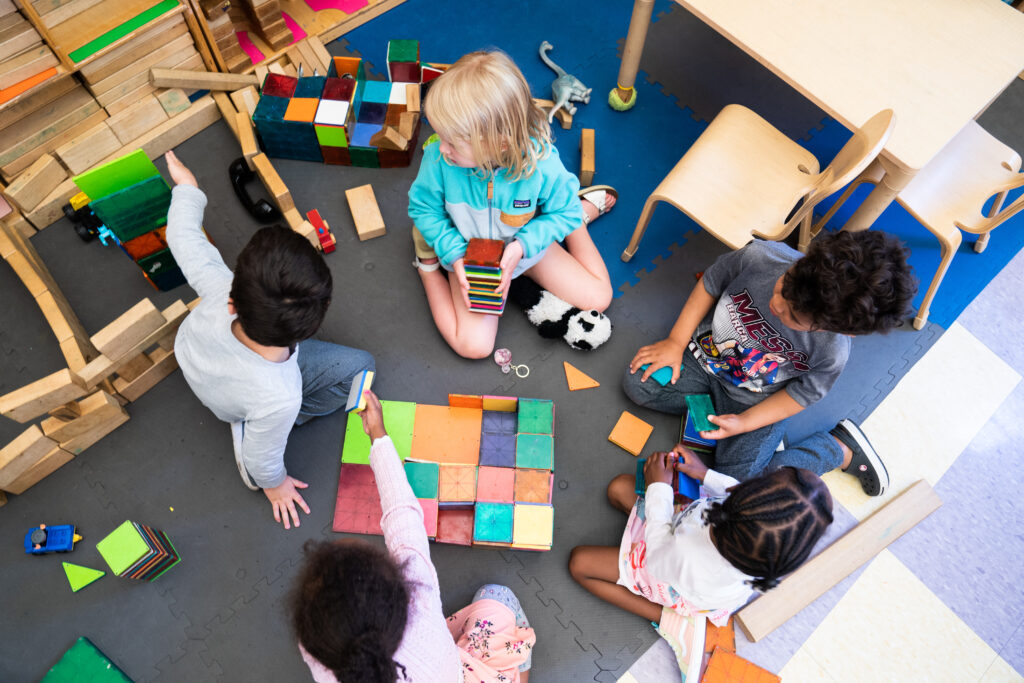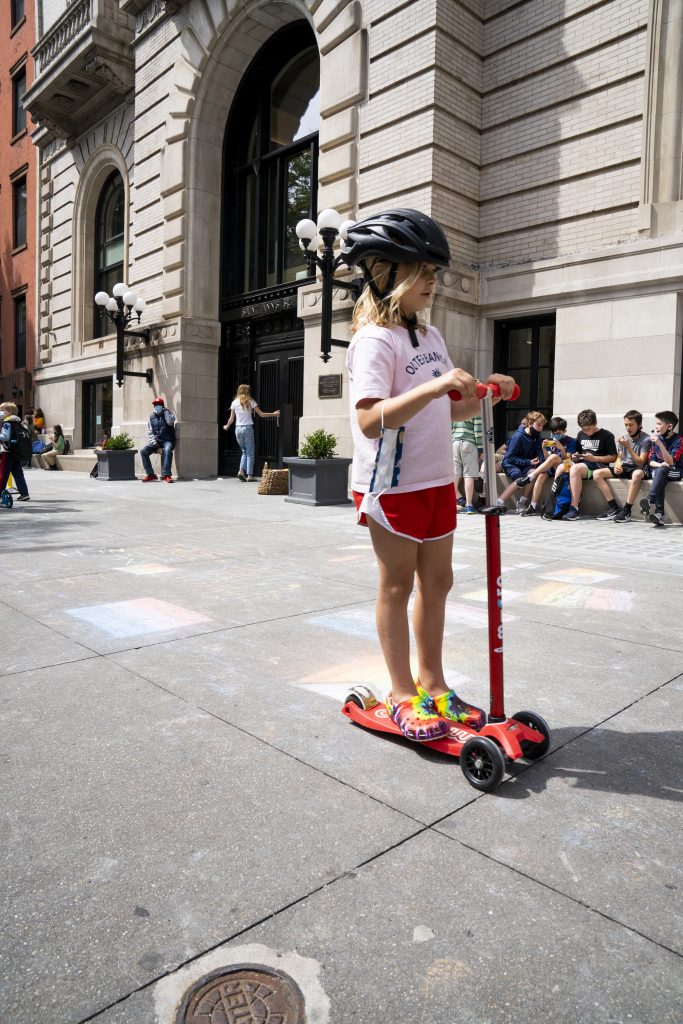Lunch Menu |
At whatever age or entry point your family joins Saint Ann’s, there are a few defining truths that will feature prominently in your journey through the school.

Systematically Asystematic
The first is that nothing will be the same—this is what we sometimes call our “systematically asystematic” approach. That is, no two student journeys through Saint Ann’s will look alike. Even two siblings may forge entirely different paths through our curriculum, and that’s by design. The only constant we promise is variation.
That is because our goal in educating children isn’t to build or curate them, but rather to create the conditions that will enable them to become themselves (and reinvent themselves many times along the way!). We cherish children’s sense of wonder and independent play from the very beginning of preschool right up through high school, so our program is designed to allow for significant freedom throughout.
There is no set course. Individual students chart their own paths. We help them develop a love of learning for its own sake. From there, we aim to create a trajectory that equips each student with the capacity and confidence to make informed judgments about his or her course of study.
To that end, the curriculum is dynamic and flexible, shaped by faculty who have wide latitude when it comes to both substance and style. At Saint Ann’s, in many ways the curriculum is the faculty, and both are idiosyncratic. Our teachers are chosen for their love of subject and their dedication to students.
In our younger grades, a head teacher shapes classroom curriculum according to his or her own intellectual interests and expertise. In our departmentalized middle and high schools, faculty are given the freedom to experiment, improvise, innovate and create, so that students who take a course of the same name with two different teachers will almost certainly have unique experiences.
More information about the backbone of our curriculum and how it develops from division to division can be found in our Curriculum Guide. Our most recent middle school and high school course catalogs are also available online.
The heart of our school is in the classroom. We hold dear, above all else, the primacy of the teacher/student collaboration. Our administrative structure is explicitly designed to support that relationship and to help students become increasingly confident in navigating it, relying less on their parents to intervene and gradually becoming the architects of their own school experience.
No Grades
There really are no grades. A deliberate rejection of formal letter or number grades is a core aspect of our educational philosophy. We don’t grade, rank, or compare students to one another at any time in any classroom or division of the school.
Instead, ongoing dialogue, parent-teacher conferences, and (beginning in Kindergarten) narrative reports communicate what students are learning. You can read more about “Why We Don’t Use Grades” here.

Arts
Throughout the school, the arts—visual, performing and recreational—are co-curricular and central to everything we do. Our annual “art calendar” features student artwork from every division of the school. It gets mailed home each August so families can plan ahead for a year chock-full of plays, concerts, poetry readings and puppet parades. An electronic version of the calendar is available on our website here, where you’ll also find a link to our Athletic Calendar, the best place for real-time information about interscholastic sports. Parents are always welcome at arts events and sports games, which are a great way to get involved with the school community.
Diversity and Institutional Equity
As part of our mission, we strive to see every child flourish, to equip them with the skills they need to explore and question the world, to be a school where they can share their dreams with us. Keeping the student experience at the center of our vision and decision-making, we seek to draw out authentic, exceptional work from our students. We offer them our profound sense of humanity as the foundation of our relationship with them. For these and many other reasons we believe ongoing efforts to increase diversity within our community and enact change across every dimension of our school toward making Saint Ann’s a more equitable place to learn and work are essential to who we are.
Part of equipping our students with the skills and knowledge they need to explore and question the world includes understanding how individual and group identities have shaped and continue to shape society. This has happened most saliently in the United States around the construct of race. Therefore, the work of creating a more equitable school focuses on race and racism, while incorporating many other aspects of identity that contribute to disparity, inequity, or injustice. Recognition of this intersection of identities is a feature of the work as we approach it at Saint Ann’s.
To read more about our approach to equity work and what it looks like in practice, visit the Diversity and Institutional Equity pages of our website.

Style
We embrace a warm, laid back, informal and improvisational community style. There is no dress code. Many teachers go by their first names. High school students have unstructured free periods. Students hang out in administrative offices where the doors are open to them. Formal “rules” and punitive measures for their own sake are rare. A sense of humor, whimsy and deep care for one another and for the project of our school characterize our daily interactions.
